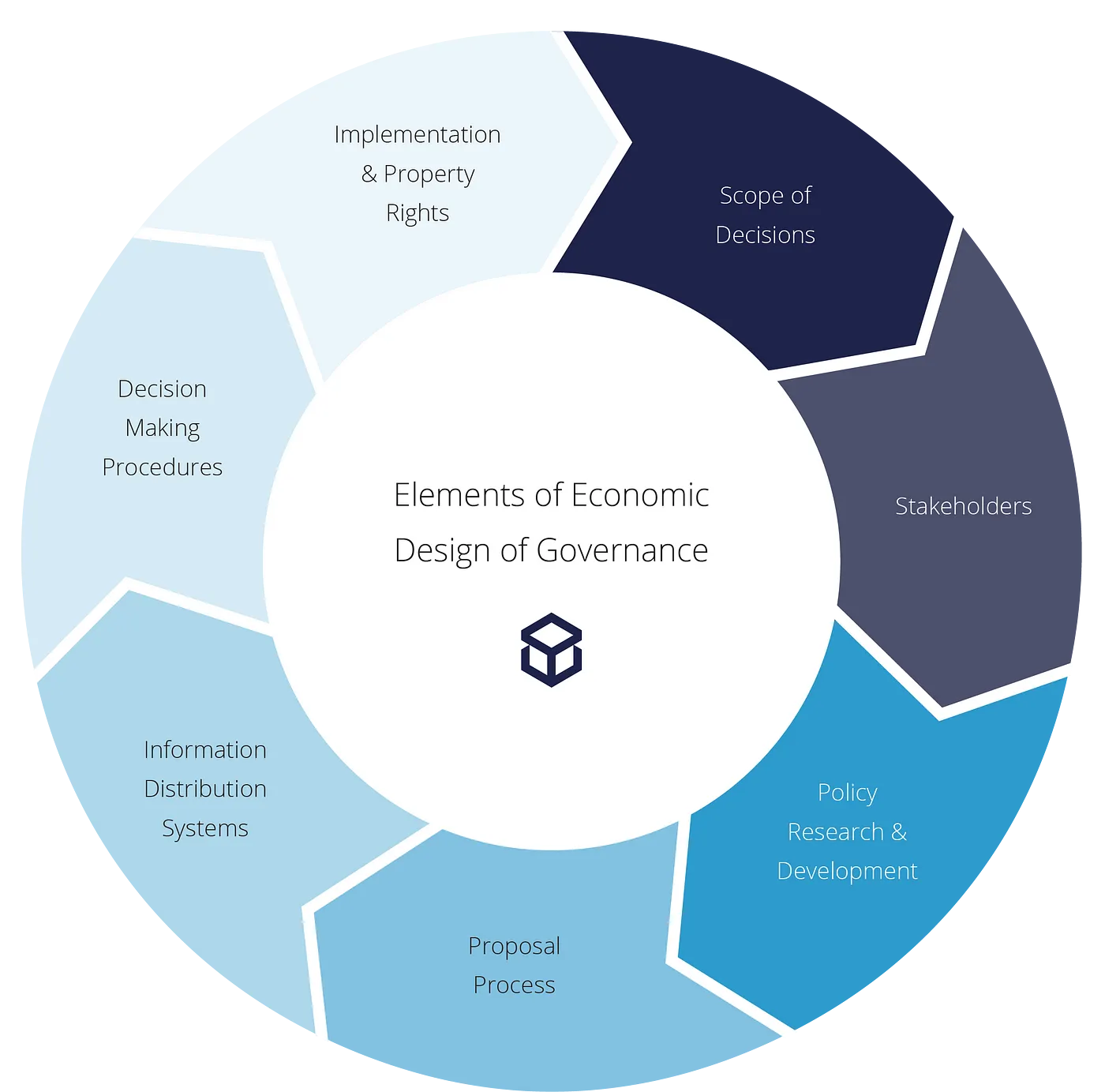Original Link: A Framework for Blockchain Governance Design: The Prysm Group Wheel
Author: Cathy Barrera, PhD
Summary & Commentary
The piece articulates the difference between operational rules and governance in blockchain platforms, along with offering a structured framework for designing effective governance for such systems.
Operational rules are the regulations that guide daily operations in a blockchain platform. They determine the size of block rewards, dictate how the next block in the chain will be determined, and ensure contracts, markets, and token economies behave effectively.
Governance, however, involves the decision-making processes regarding changes or updates to the operational rules. It addresses unexpected events and unanticipated changes, allowing the system to adapt over time to inevitable market variations.
The key takeaway here is that while operational rules are the backbone of a platform, governance is its lifeblood, allowing it to adapt, grow, and evolve.
The Prysm Group Wheel is introduced as a useful framework for designing effective blockchain governance. The seven elements it suggests to consider are:
Scope of Decisions: Understand what decisions need to be made with the governance process and plan accordingly.
Stakeholders / Participants: Define stakeholders and their various objectives to ensure that decisions align with their wishes.
Policy Research and Development: Prepare a specific proposal to implement a decision, especially for blockchain projects where decisions have to be translated into code.
Proposal Process: Establish a clear process by which proposals are made.
Information Distribution Systems / Education: Communicate effectively with all stakeholders to ensure informed decision-making.
Decision-Making Procedures: Implement mechanisms to facilitate decision-making that stakeholders feel represents their interests.
Implementation and Property Rights: Understand the property rights of ecosystem stakeholders to avoid power imbalance during the implementation phase.
Practical actions that can be taken based on these insights include the following:
Blockchain developers should focus on developing governance mechanisms that allow for adaptability and change. They should also aim to include all participants in decision-making processes.
Investors in blockchain projects should look for those with well-designed governance structures, as these are more likely to succeed in the long term.
Blockchain users need to understand the governance structures of the platforms they use to ensure that they are comfortable with the decision-making processes.
Policy-makers and regulators should familiarize themselves with different blockchain governance models in order to understand how best to regulate these platforms.
In conclusion, governance in blockchain platforms should be seen as an essential component of their design and should be given the same level of consideration as the operational rules themselves. Through careful design and thoughtful consideration of all stakeholders, effective blockchain governance can be achieved.

![Economics of Tokenized Incentives 3: Token Value Won’t Align Stakeholders [Commentary]](/_next/image?url=https%3A%2F%2Fwww.datocms-assets.com%2F101962%2F1690771457-cbc3-img1.png&w=3840&q=75)

![Economics of Tokenized Incentives 2: Selecting Effective Performance Metrics [Commentary]](/_next/image?url=https%3A%2F%2Fwww.datocms-assets.com%2F101962%2F1690770918-cbc2-img1.png&w=3840&q=75)
![Economics of Tokenized Incentives 1: Intro to Pay for Performance [Commentary]](/_next/image?url=https%3A%2F%2Fwww.datocms-assets.com%2F101962%2F1690770568-cbc1-img1.png&w=3840&q=75)
![Incomplete Contracts and Blockchain [Commentary]](/_next/image?url=https%3A%2F%2Fwww.datocms-assets.com%2F101962%2F1690856249-cbc5-img1.png&w=3840&q=75)
